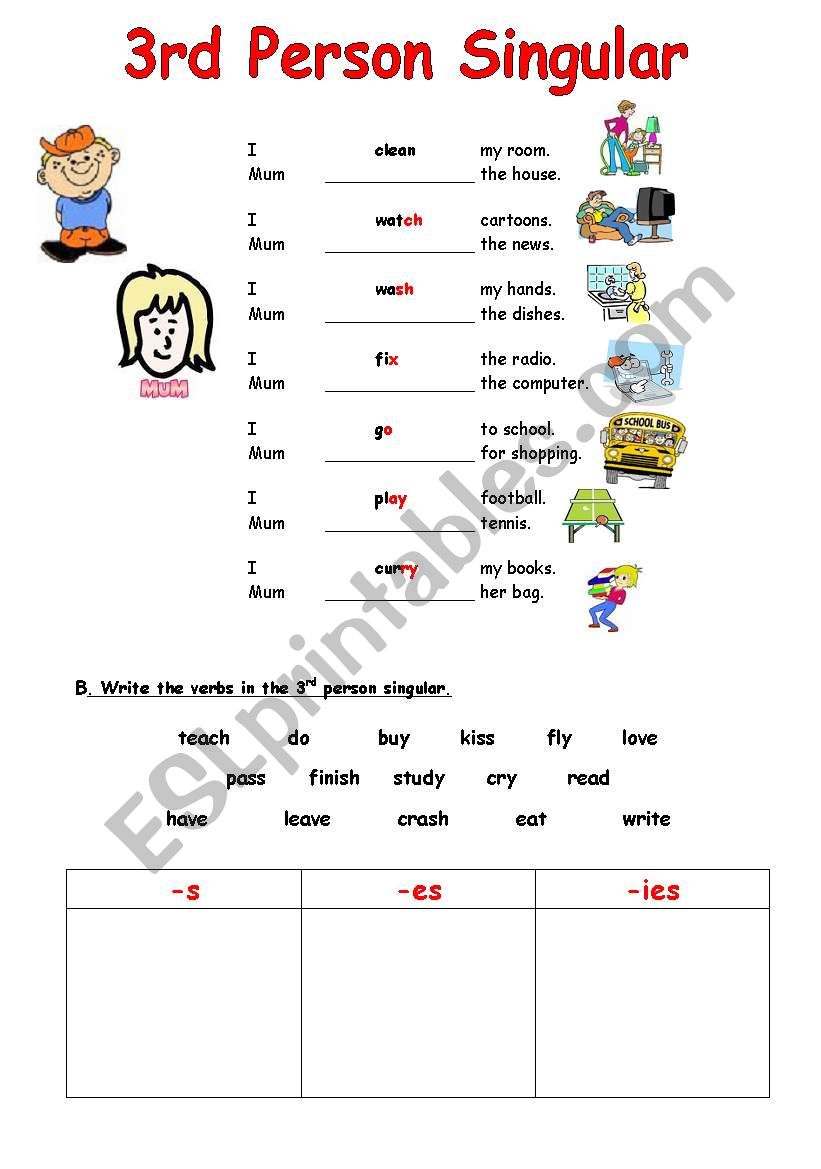
Simple Present 3rd Person Singular Spelling Rules ESL worksheet by Yiotoula
There are up to five forms for each verb: root, third-person singular, present participle, past, and past participle. Root form of the verb The root form of a verb is the base form of the word. Roots have not been conjugated and do not include prefixes or suffixes. Here's a tip: Want to make sure your writing shines?
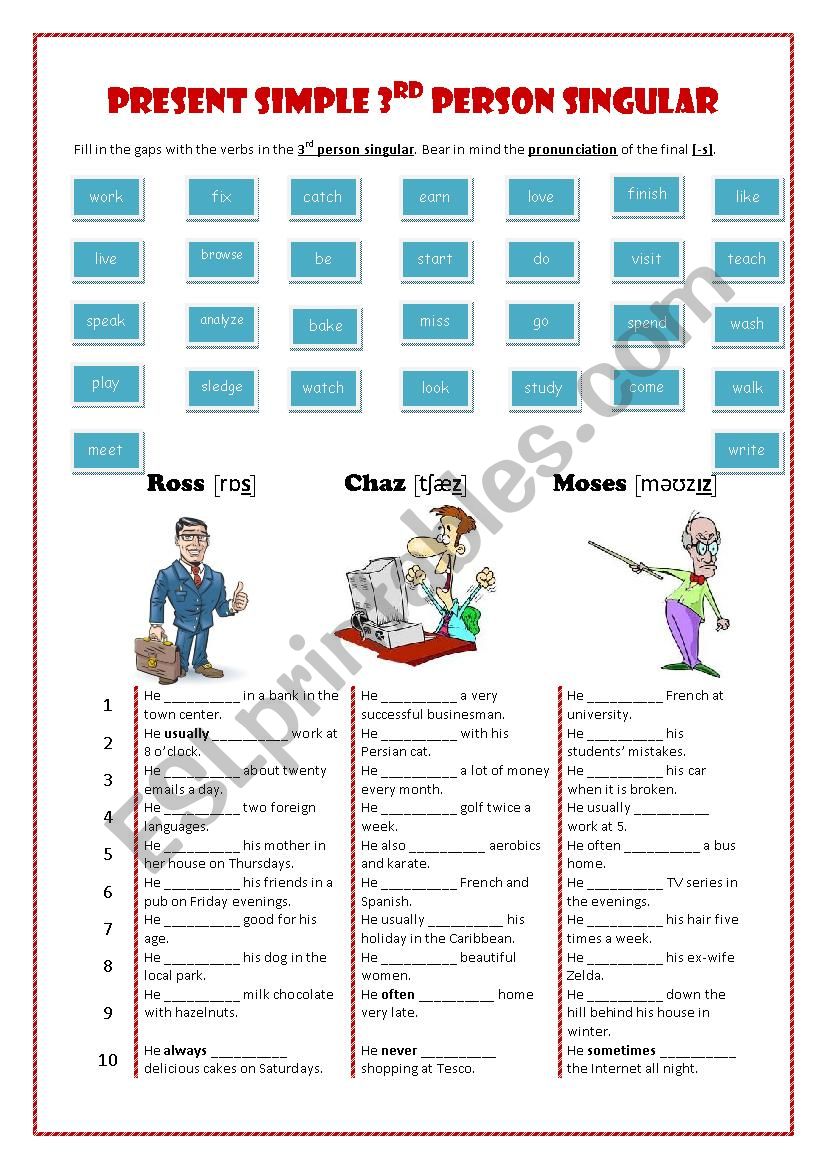
Present Simple 3rd Person Singular Pronunciation ESL worksheet by Renata75
The verb forgo, which has the root go, has an irregular past tense form and past participle (forwent, forgone). The verb undo, which has the root do, is irregular in the third person singular form of the present tense and has an irregular past tense and past participle (undoes, undid, undone). The Verb To Be
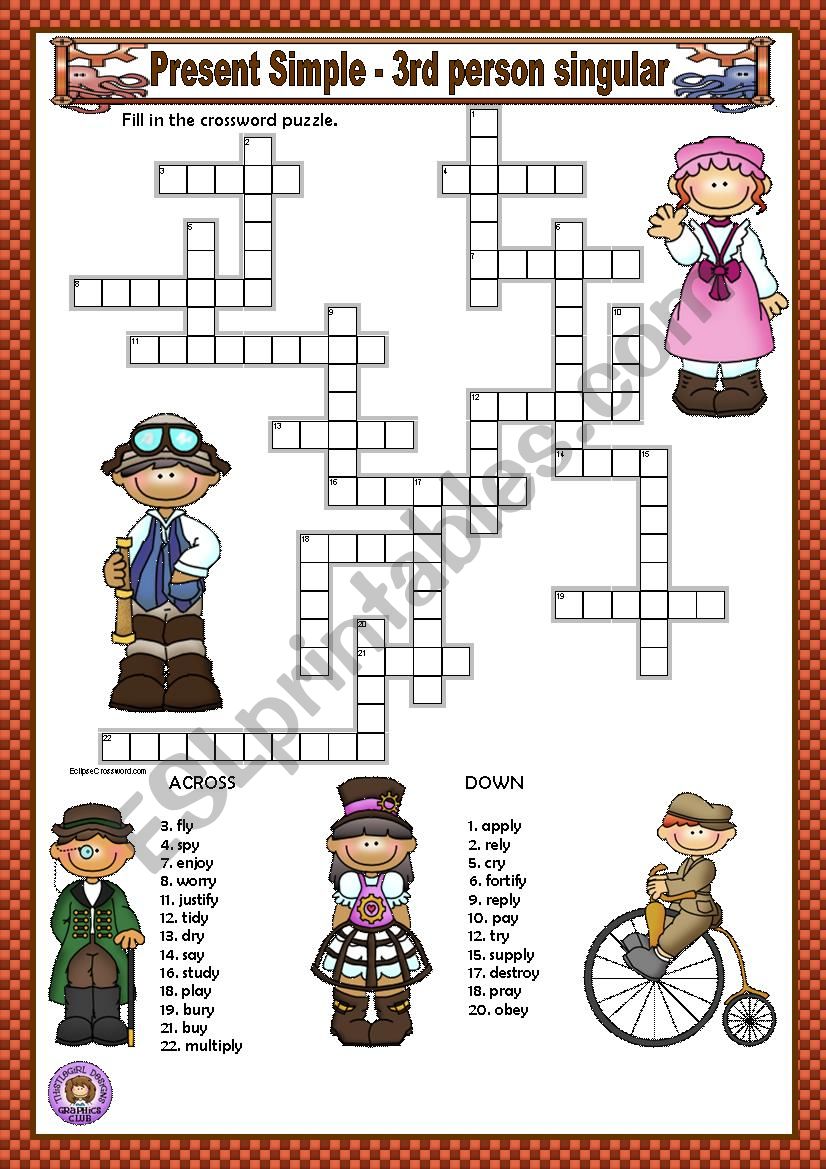
PRESENT SIMPLE 3RD PERSON SINGULAR VERBS ENDING IN Y + KEY ESL worksheet by
Forming the third person singular Most of the time, the simple present tense is the same as the verb's infinitive (aka base) form. The third person singular is used when the subject is neither the speaker nor the person being addressed and is a singular noun or pronoun (e.g., "he," "she," "it"). To form the third person singular in the simple present tense, "-s" is usually.
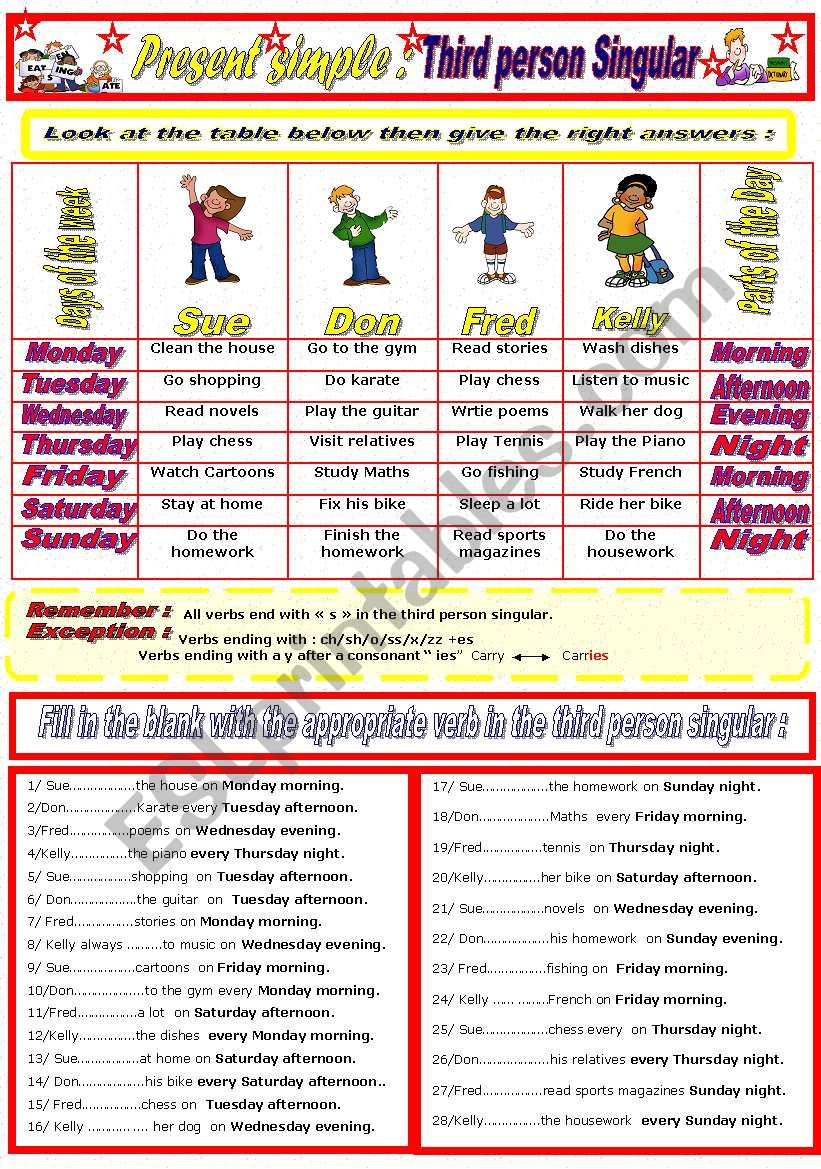
Third Person Present Verb slidesharedocs
Age: 8-13 Level: beginners Language: English (en) ID: 122982 23/04/2020 Country code: GR Country: Greece School subject: English as a Second Language (ESL) (1061958) Main content: Present Simple (2013236) Fill in the 3rd person singular form of the given verbs. Then, choose the correct option to complete the sentences in Present Simple.

Third person singular ESL worksheet by Nuria08
1. If the verb ends in SS, X, CH, SH or the letter O, we add + ES in the third person. A mechanic fixes cars. She watches soap operas every afternoon. He kisses his wife before he goes to work. 2. If the verb ends in a Consonant + Y, we remove the Y and + IES in the third person. Isabel studies every night. The baby cries all the time.

Write the 3rd person singular form of the verb.watch
How to form the simple present In the simple present, most regular verbs use the root form, except in the third-person singular (which ends in s ). First-person singular: I write. Second-person singular: You write. Third-person singular: He/she/it writes. (Note the s.) First-person plural: We write. Second-person plural: You write.

QUICK TIP about third person singular!! YouTube
As you can see, this rule is pretty simple. But, yes, I probably would not write a post about it if it were that simple. There are, however, a couple of situations when the third person singular form is made in a slightly different way. Let's have a look at them now. Verbs ending in -s, -z, -ss, -zz, -x, -sh, -ch, -tch

3rd person singular forms English phonics, Spelling rules, Learn english
We are You are They are "To have" has its own rule. I have You have He/she/it has We have You have They have Other patterns in the present: Verbs ending in "-o" preceded by a consonant generally add "-es." Examples: Do >> does Go >> goes

a poster with the words and phrases in red, black, and white on it
In English grammar, the third-person singular verb ending is the suffix -s or -es that's conventionally added to the base form of a verb in the present tense when it follows a singular subject in the third person (for example, "She waits and watches "). Third-Person Singular Verb Ending

Present simple AND THIRD PERSON
Present simple Level: beginner The present tense is the base form of the verb: I work in London. But with the third person singular ( she / he / it ), we add an -s: She works in London. Present simple questions Look at these questions: Do you play the piano? Where do you live? Does Jack play football? Where does he come from?

SPELLING OF THIRD PERSON SINGULAR FORMS IN PRESENT SIMPLE TENSE AND EXAMPLES Present simple
The term "third person" refers to someone else, i.e., not the speaker ("I," "me"), a group including the speaker ("we," "us"), or the speaker's audience ("you"). For example: I am speaking to you about her. ("I" is the speaker, so "I" is in the first person. "You" is the person being spoken to, so "you" is in the second person.
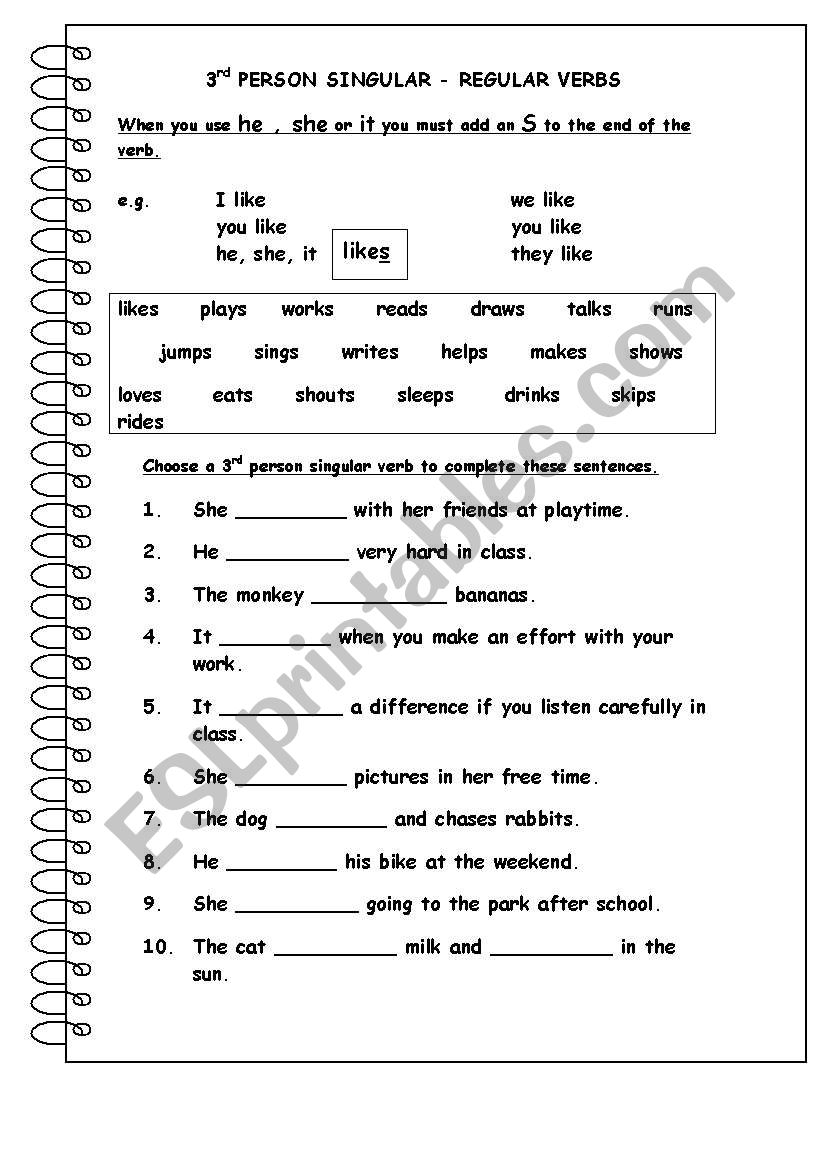
3rd PERSON SINGULAR REGULAR VERBS ESL worksheet by sabados
I always wear blue jeans, and my sister always wears skirts. Verbs ending in 'ss' 'ch' 'sh' or 'x' add ' es ' to the end of the verb: For verbs ending in a consonant followed by ' y ', we remove the ' y ' and add ' ies ' to the end of the verb. This does not apply to verbs ending in a vowel followed by ' y ', which are conjugated normally.

ThirdPerson Singular Your best Guide (Free 24page eBook) World English Blog
Adverbs of frequency (e.g., "sometimes," "never") are often used in the simple present to indicate the frequency with which something occurs (e.g., "I always stretch in the morning," "You never eat salad"). Forming the third person singular

3rd person singular Subject verb agreement, Language vocabulary, Sentence writing
To form the third person singular present tense form of most regular English verbs, simply affix the suffix -s to the end of the verb. For example, the following list includes the infinitive, base form, and third person singular present tense form some common English verbs: to argue - argue - argues to clean - clean - cleans
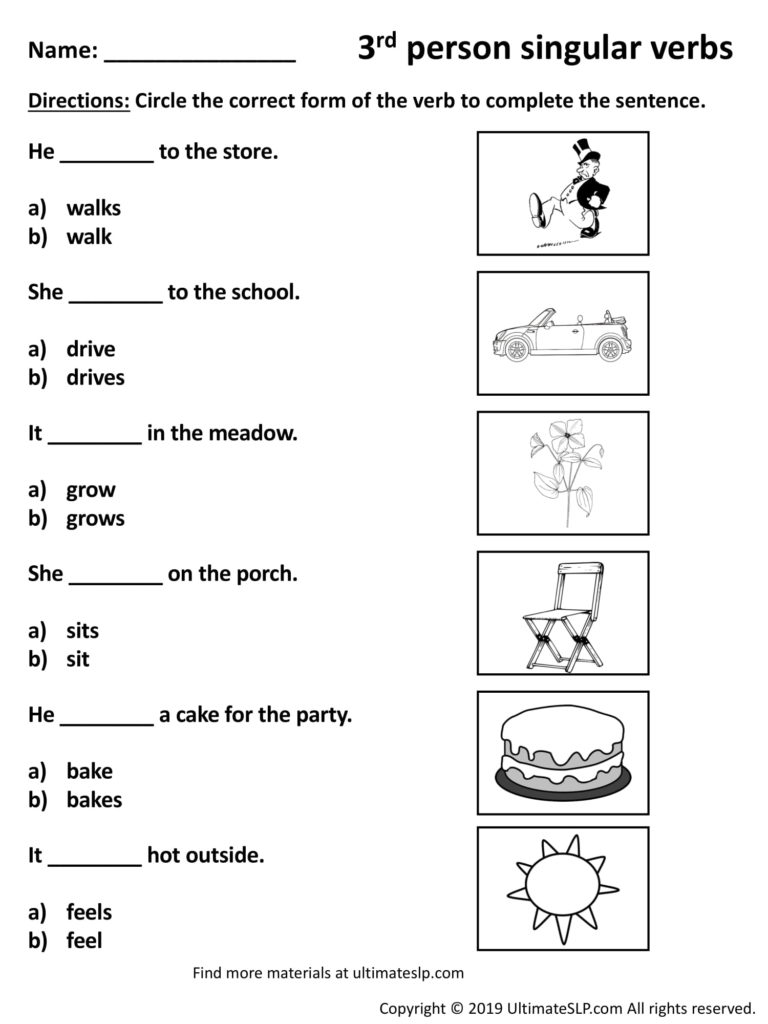
Third Person Singular Verb Agreement Worksheet Ultimate SLP
Sometimes the best way to understand what singular and plural verbs are is to see examples. Learn more about these verbs with this helpful chart of samples.

A. Write the third person singular of the following verbs. Brainly.lat
Third Person Singular: First Rule Third Person Singular: Second Rule Third Person Singular: Third Rule Third Person Singular: Fourth Rule Examples of Sentences with Verbs in the Third Person Third Person Singular: Negative Sentences Third Person Singular: Questions Video: Third-Person Singular Rules and Examples Summary: Third Person Singular